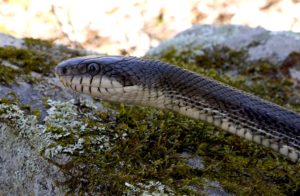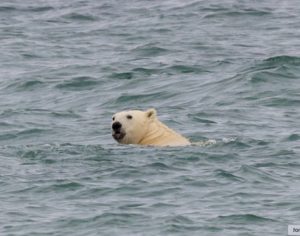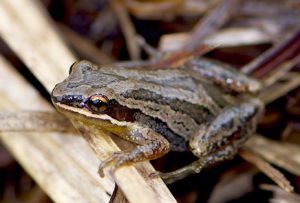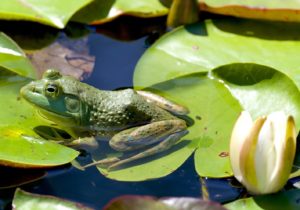Conservation Genomics of Snakes
 For over three decades, we have worked on quantifying the distribution of genetic diversity of at-risk and other snakes across their respective Ontario ranges and beyond, including eastern foxsnakes, eastern hog-nosed snakes, massassauga, Butler’s gartersnakes, gray ratsnakes, northern watersnakes, and eastern gartersnakes (for the latter two, focussed on island populations). Many snake species on Ontario (alas) face common threats including habitat loss and degradation, road mortality, persecution, and disease all overlain by rapidly changing climates. Our work has shown significant impacts of habitat loss and fragmentation leading to population isolation, diminished genetic diversity, and inbreeding. We continue to refine our ‘maps’ of genetic diversity and, using new genomics data, will map adaptive diversity of isolated, wild populations of multiple species at risk, seek better ways to inform ex site management, and develop and validate new genomics tools for ex site management and conservation.
For over three decades, we have worked on quantifying the distribution of genetic diversity of at-risk and other snakes across their respective Ontario ranges and beyond, including eastern foxsnakes, eastern hog-nosed snakes, massassauga, Butler’s gartersnakes, gray ratsnakes, northern watersnakes, and eastern gartersnakes (for the latter two, focussed on island populations). Many snake species on Ontario (alas) face common threats including habitat loss and degradation, road mortality, persecution, and disease all overlain by rapidly changing climates. Our work has shown significant impacts of habitat loss and fragmentation leading to population isolation, diminished genetic diversity, and inbreeding. We continue to refine our ‘maps’ of genetic diversity and, using new genomics data, will map adaptive diversity of isolated, wild populations of multiple species at risk, seek better ways to inform ex site management, and develop and validate new genomics tools for ex site management and conservation.
BearWatch. Monitoring Impacts of Arctic Climate Change using Polar Bears, Genomics and Traditional Ecological Knowledge
 BearWatch seeks to create an alternate way to monitor polar bears across the Canadian Arctic using non-invasive genomics tools and Inuit Qaujimajatuqangit. BearWatch is a partnership among northern communities in Nunavut and the Inuvialuit Settlement Region, HTAs in Gjoa Haven and Coral Harbor, the Inuvialuit Game Council, the governments of Nunavut, Northwest Territories, and Yukon, the Canadian Rangers, and researchers and students at Queen’s University, University of Toronto, University of Calgary, Trent University, McGill University, University of British Columbia, University of Northern British Columbia, and the Institut National de la Recherche Scientifique. Check out the BearWatch web site for publications and other resources. We have developed a scat-based toolkit that allows us to genotype individual bears (identity and sex), assess their diet using metabarcoding, quantify elves of some contaminants (including microplastics and methyl mercury), and are working on additional tools including digital PCR for testing for pathogens and parasites using scat.
BearWatch seeks to create an alternate way to monitor polar bears across the Canadian Arctic using non-invasive genomics tools and Inuit Qaujimajatuqangit. BearWatch is a partnership among northern communities in Nunavut and the Inuvialuit Settlement Region, HTAs in Gjoa Haven and Coral Harbor, the Inuvialuit Game Council, the governments of Nunavut, Northwest Territories, and Yukon, the Canadian Rangers, and researchers and students at Queen’s University, University of Toronto, University of Calgary, Trent University, McGill University, University of British Columbia, University of Northern British Columbia, and the Institut National de la Recherche Scientifique. Check out the BearWatch web site for publications and other resources. We have developed a scat-based toolkit that allows us to genotype individual bears (identity and sex), assess their diet using metabarcoding, quantify elves of some contaminants (including microplastics and methyl mercury), and are working on additional tools including digital PCR for testing for pathogens and parasites using scat.
Environmental DNA for surveying species at risk & aquatic ecosystem health
Aquatic environments globally face human-caused threats including pollution, invasive species, over-harvesting, drainage, and climate change. For example, a recent UN report estimated that 1 million species are at risk of extinction. The 2018 WWF Living Planet Report indicates a biodiversity loss of 60% since 1970, threatening global delivery of $125 trillion of ecosystem services, including drinking water, food, flood control, and carbon sequestration. Freshwater species have been disproportionately affected, declining by 83% in the last 40 years, more than terrestrial or marine species. The WHO estimates that 2 billion people use contaminated water (feces, algal blooms). Two-thirds of Canadians rely on drinking water from surface waters, mostly provided by forested watersheds that are themselves under threat. In Canada in 2015, freshwater biodiversity supported a recreational fishery that contributed $7.9 billion to local economies. Over 200 aquatic invasive species occur or will soon occur in the Great Lakes region alone, posing threats to local ecology, human health, and the economy. Working with local partners that include the Mohawk Council of Akwesasne Environmental Program, the First Nations Technical Institute, the River Institute, and Thousand Islands National Park we are developing a suite of tools to survey aquatic biodiversity using quantitative PCR, digital droplet PCR and DNA metabarcoding and build eDNA survey capacity within partner organizations. Focal species for eDNA work include temperate turtles of Eastern Ontario, chorus frogs, and native and invasive mollusks and fish of the St. Lawrence River.
Speciation in frogs
 Frogs are excellent systems for phylogeographic studies and research seeking to understand mechanisms of speciation: they often have easily quantifiable advertisement calls and mate recognition systems that are amenable to experimentation, they are typically biphasic meaning that they have both aquatic (larval) and terrestrial phases of their life history, they are sensitive to environmental changes, and they often have low dispersal and high site fidelity meaning that they can exhibit fine scale population differentiation. We use genomics, spatial ecology, bioacoustics and phototaxis experiments to evaluate these factors in multiple frog species from Southern Cone South America, Australia and North America, with a focus on species in the genus Pseudacris (chorus frogs) in the US and Canada. A particular focus has been on the causes and consequences of mito-nuclear discordance in spring peepers and northern members of trilling chorus frog clade – particularly P. triserieta and P. maculata in Ontario and Quebec.
Frogs are excellent systems for phylogeographic studies and research seeking to understand mechanisms of speciation: they often have easily quantifiable advertisement calls and mate recognition systems that are amenable to experimentation, they are typically biphasic meaning that they have both aquatic (larval) and terrestrial phases of their life history, they are sensitive to environmental changes, and they often have low dispersal and high site fidelity meaning that they can exhibit fine scale population differentiation. We use genomics, spatial ecology, bioacoustics and phototaxis experiments to evaluate these factors in multiple frog species from Southern Cone South America, Australia and North America, with a focus on species in the genus Pseudacris (chorus frogs) in the US and Canada. A particular focus has been on the causes and consequences of mito-nuclear discordance in spring peepers and northern members of trilling chorus frog clade – particularly P. triserieta and P. maculata in Ontario and Quebec.
Climate change: frog breeding phenology & vertebrate geographic distributions
 Because of their biphasic life history, permeable skin and high philopatry, temperate frogs may be particularly susceptible to environmental stressors including changing climate and seasonality. Over the last 15 years or so we have maintained an array of automated acoustic recorders together with environmental sensors – mostly focused on the Queen’s University Biological Station – QUBS. The number of sites has varied from as fews as three to over 20 depending on our capacity to maintain these. The intention is to use these data to test for changing spring emergence and breeding of resident frogs and toads.
Because of their biphasic life history, permeable skin and high philopatry, temperate frogs may be particularly susceptible to environmental stressors including changing climate and seasonality. Over the last 15 years or so we have maintained an array of automated acoustic recorders together with environmental sensors – mostly focused on the Queen’s University Biological Station – QUBS. The number of sites has varied from as fews as three to over 20 depending on our capacity to maintain these. The intention is to use these data to test for changing spring emergence and breeding of resident frogs and toads.
